Abstract
A 2-year inhalation study was conducted in Sprague-Dawley rats with 1,3-butadiene. Groups of 110 male and 110 female rats inhaled 1,3-butadiene at 0, 1000, or 8000 ppm for 6hr/day, 5 days/week. Interim clinical pathology, neuromuscular, and histopathology investigations were carried out. The study terminated at 20 to 25% survival (105 weeks for females, 111 weeks for males). Following exposure to 1,3-butadiene there were no effects on hematology, blood chemistry, urine analysis, and neuromuscular function that definitely could be associated with treatment. Treatment was associated with changes in clinical condition, suppression of body weight gain, reduced survival, and increases in certain organ weights and in both common and uncommon tumor types. Although the biological interpretation of the significance of some of the tumor types is equivocal, the evidence suggests that the test article is an oncogen to the rat under the conditions of exposure used in this study, and the mechanism is more likely to be an indirect effect through the endocrine system, rather than a direct effect through the production of reactive metabolites.
Full text
PDF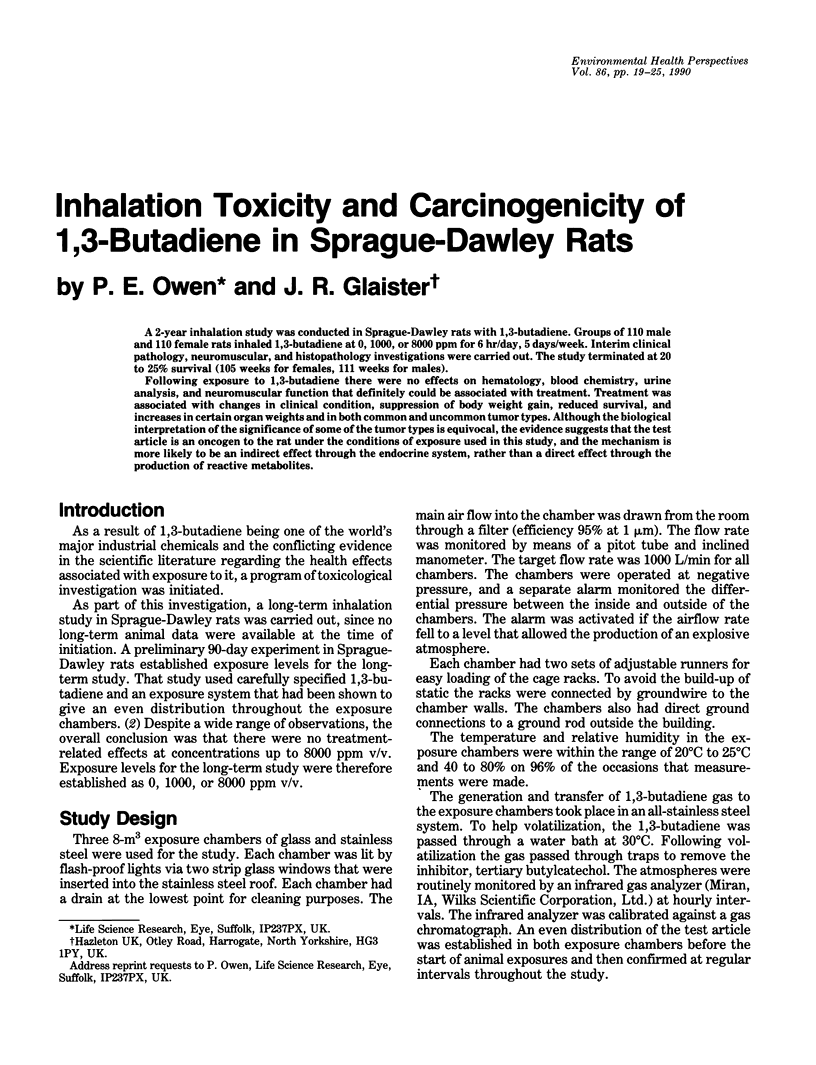
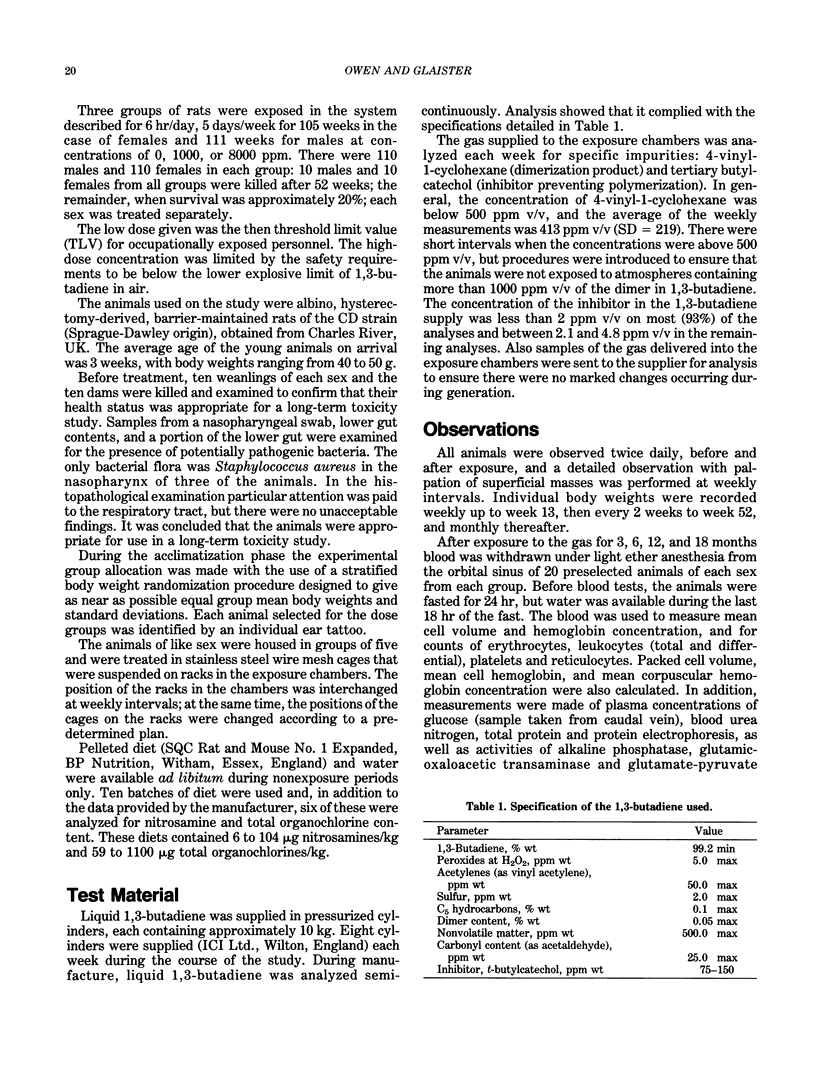
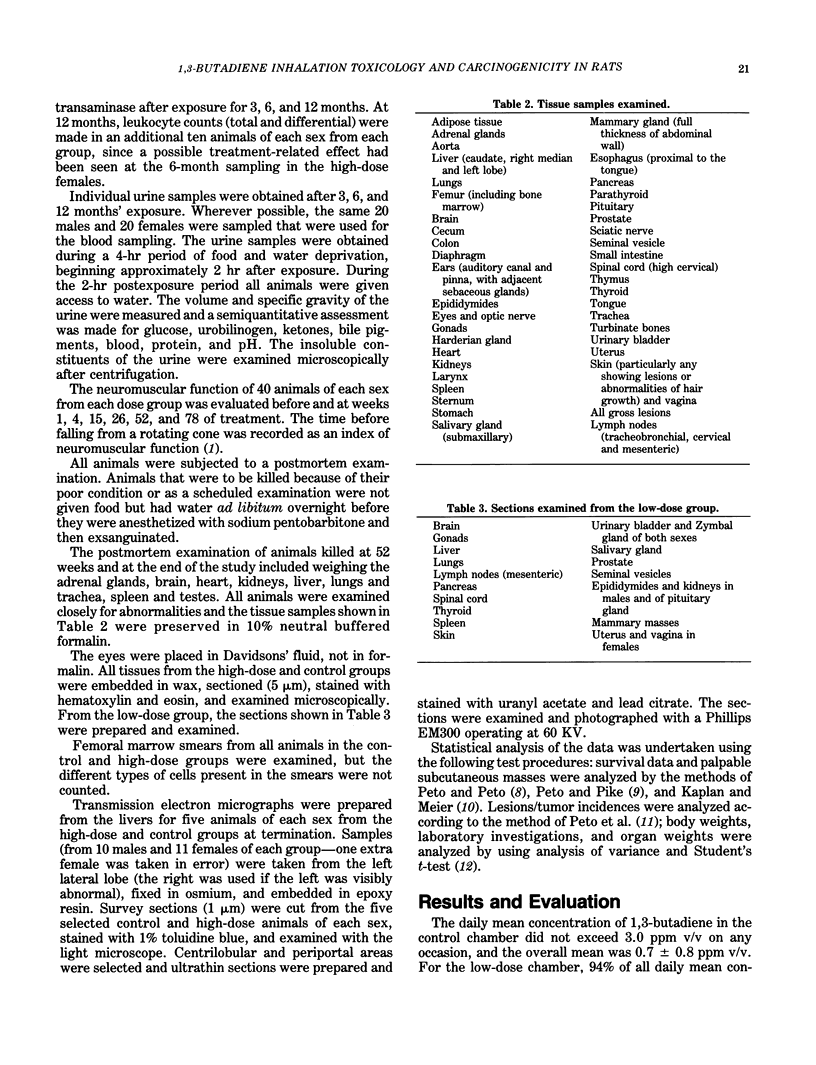
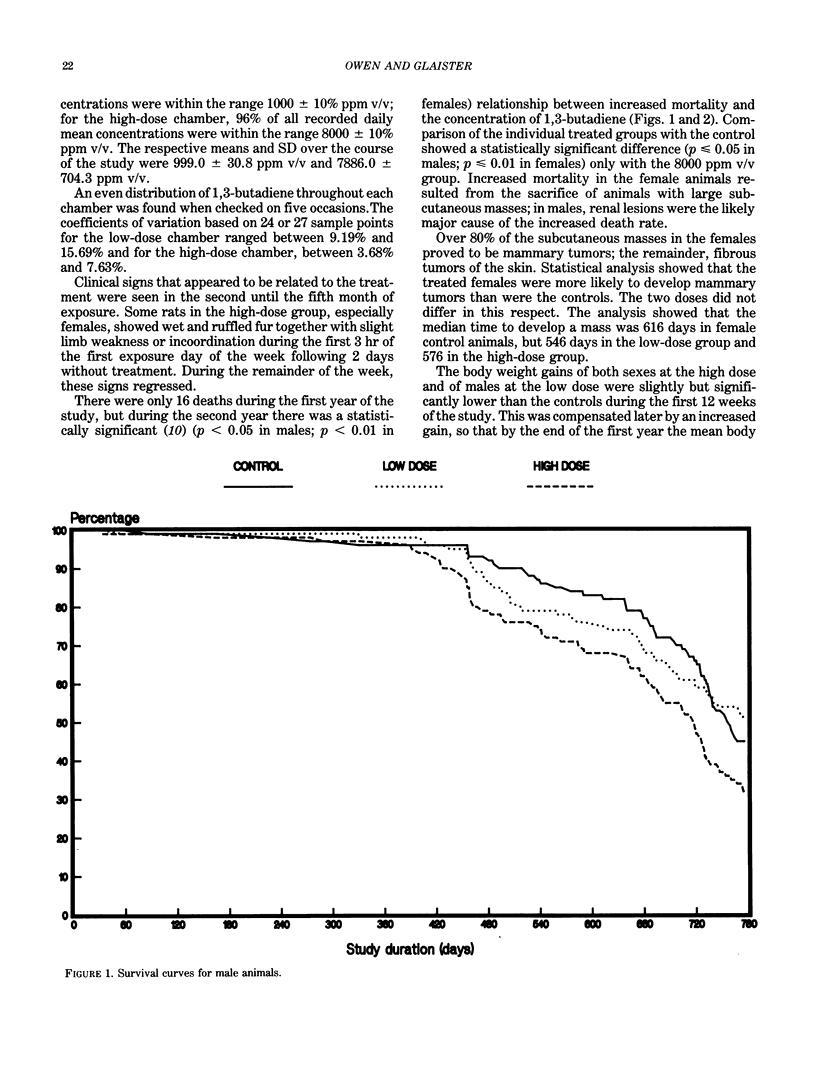

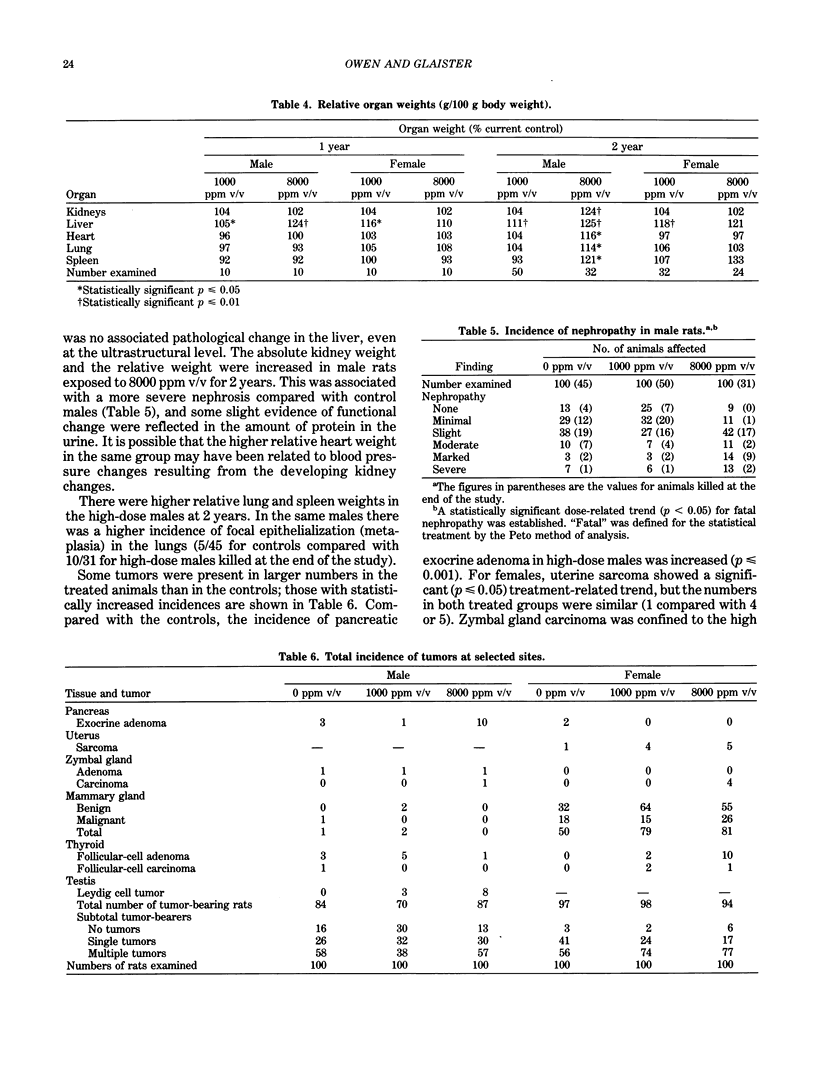
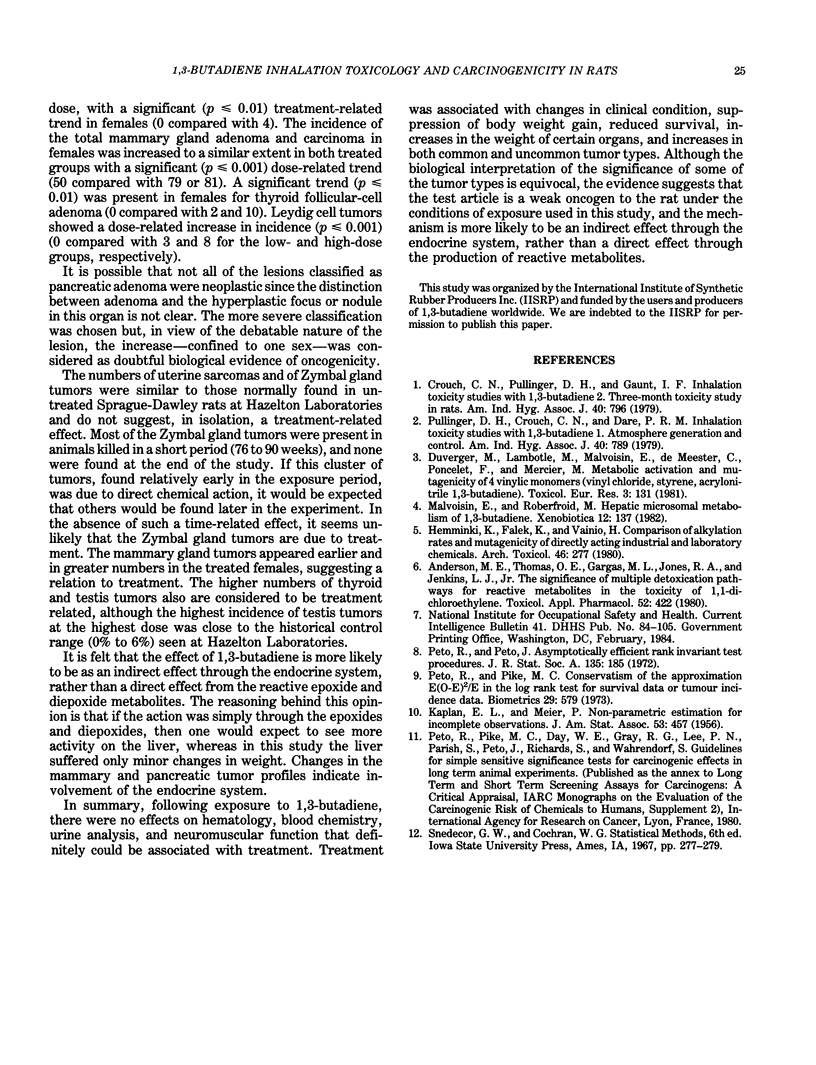
Selected References
These references are in PubMed. This may not be the complete list of references from this article.
- Andersen M. E., Thomas O. E., Gargas M. L., Jones R. A., Jenkins L. J., Jr The significance of multiple detoxification pathways for reactive metabolites in the toxicity of 1,1-dichloroethylene. Toxicol Appl Pharmacol. 1980 Mar 15;52(3):422–432. doi: 10.1016/0041-008x(80)90337-3. [DOI] [PubMed] [Google Scholar]
- Crouch C. N., Pullinger D. H., Gaunt I. F. Inhalation toxicity studies with 1,3-butadiene -- 2. 3 month toxicity study in rats. Am Ind Hyg Assoc J. 1979 Sep;40(9):796–802. doi: 10.1080/15298667991430316. [DOI] [PubMed] [Google Scholar]
- Duverger M., Lambotte M., Malvoisin E., de Meester C., Poncelet F., Mercier M. Metabolic activation and mutagenicity of 4 vinylic monomers (vinyl chloride, styrene, acrylonitrile, butadiene). Toxicol Eur Res. 1981 May;3(3):131–140. [PubMed] [Google Scholar]
- Hemminki K., Falck K., Vainio H. Comparison of alkylation rates and mutagenicity of directly acting industrial and laboratory chemicals: epoxides, glycidyl ethers, methylating and ethylating agents, halogenated hydrocarbons, hydrazine derivatives, aldehydes, thiuram and dithiocarbamate derivatives. Arch Toxicol. 1980 Dec;46(3-4):277–285. doi: 10.1007/BF00310445. [DOI] [PubMed] [Google Scholar]
- Malvoisin E., Roberfroid M. Hepatic microsomal metabolism of 1,3-butadiene. Xenobiotica. 1982 Feb;12(2):137–144. doi: 10.3109/00498258209046787. [DOI] [PubMed] [Google Scholar]
- Peto R., Pike M. C. Conservatism of the approximation sigma (O-E)2-E in the logrank test for survival data or tumor incidence data. Biometrics. 1973 Sep;29(3):579–584. [PubMed] [Google Scholar]
- Pullinger D. H., Crouch C. N., Dare P. R. Inhalation toxicity studies with 1,3-butadiene -- 1. Atmosphere generation and control. Am Ind Hyg Assoc J. 1979 Sep;40(9):789–795. doi: 10.1080/15298667991430307. [DOI] [PubMed] [Google Scholar]


